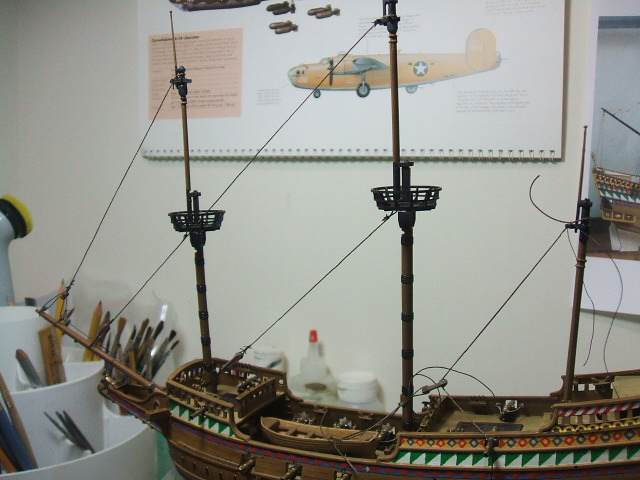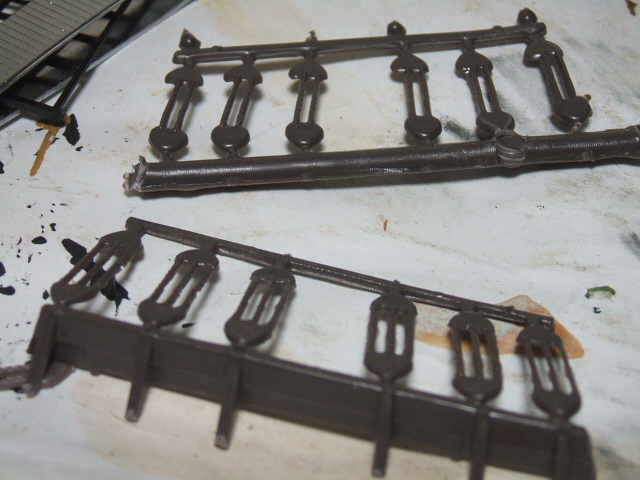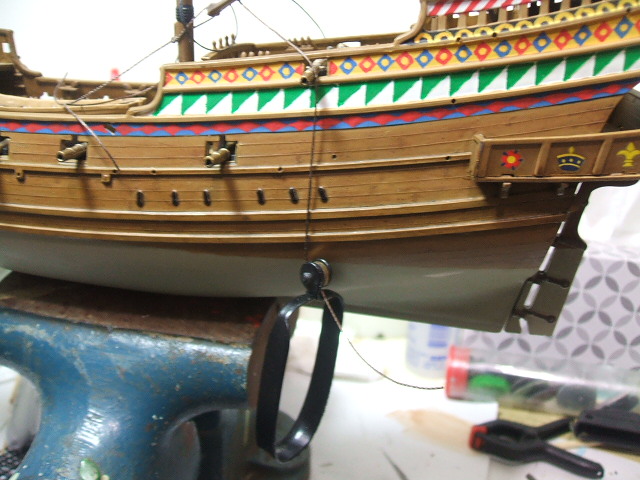
The Unknown Known
It’s tempting when writing a blog to “massage” the truth so that it’s not quite so truthful. In my case, I’m disinclined to list all my sins and omissions since my birth. I’m funny that way. The art of blogging, I believe, is somewhere in the ability to make it seem as if you are truly forthcoming–like a close friend would be–without actually spilling the beans and revealing your entire life, including the sordid bits that we all pretend don’t exist.
I’m not really good at this, but I try. I really do.
For example, when I posted a remark about the mysterious “hackle pliers”– I honestly did not remember what they were for. I knew they were critical, for some reason, and they had to grasp the thread, but other than that, it was a bit of a blur.
So I started tying thread to the model. This is little out of sequence (according to the instructions) but I find that my enthusiasm level can be raised up if I abandon job that is tedious and do something else. This is easiest to do on a “big project” like a ship model. You can always quit the annoying assembly of deadeyes, go tie on some thread, then go back to the deadeyes refreshed. So in order to avoid doing these,

I did this.

The rigging of a plastic model kit is just bizarre. In fact, I’m willing to state that “plastic sailing ship kits” are really almost impossible unless you reinforce the masts or something. To pull the thread nice and tight, you need a mast of wood, not plastic. In fact, the whole plastic ship kit industry is based on a lie–that anybody can stretch these strings and make them look good. The truth is that many model builders find that they need to replace plastic parts with wood or metal, and the next thing you know another sensible person has abandoned plastic ships and entered the hobby of wooden ship model building.
On the other hand, I have a weird desire to complete this kit, because I’ve started it twice in my life and quit on it twice. Once simply because I was way too young, and once because I was overwhelmed by the demands of higher education. (Sounded good to me!)
I just can’t forget the snowy December in 1965 when I first saw this model kit at a Sears store in Ogden, Utah. It was the most beautiful thing I had ever seen. The Sears store had replaced their garden center with Christmas toys, and right in the middle of it was this amazing example of plastic kit positive thinking. I don’t know if Sears had an exclusive deal with Revell to sell this kit, but more than a few of them must have been unloaded on starry-eyed dupes who imagined themselves pillaging the Spanish Main in 1/96 (or whatever) scale. I just cannot let go of that memory from childhood.
So this time I’m determined to finish the model, even though, as I go along, I encounter one thing after another that reassures me that the plastic sailing ship model is just not a good idea. One way I’m going to beat this Grendel into the tundra is to use the tools I used oh-so-many years ago, and one of them is (are) the hackle pliers.
So as I began to tie up the threads and feel a sort of dread descending upon the workbench, I remembered what the hackle pliers are for.

It’s a weight. If you tie flies for fishing, you already know this. The hackle pliers provide a way to pull the thread “taut” but not “tight.” You just use the weight of the pliers (which is not much) to put all the tension on the line as you tie it. This certainly seems like a weird way to go, but for a plastic kit, it’s essential to be able to pull the lines “just taut” without bending the masts or pulling the other rigging out of place, or causing it to go slack. You wrap the line around the mast or cleat or belaying pin using the rigging tool, then hang the hackle pliers from it to keep it in place and the at the proper tension. Then you do your half-hitches or clove-hitches while the hackle pliers are dangling from the end of the line, letting the hackle pliers stay on there, swinging around as they provide a reliable “back tension” on the line.
So there it is– a handy hint if you have ever been bitten by the rare African fly that carries the plastic ship kit illness. But a better approach might be to skip the plastic kit and get wood.
Failing that, I have been told there is a type of thread that is stretchy, and I have seen a few people use it for aircraft wire. Perhaps a heavier line could be used for ships. I am not sure what it is called, some type of lycra string I am guessing.
I have some EZ Line. It’s a good product and very useful for antennae on WWII planes. I’m sure it could be adapted to rigging ships, but I think I’ll stick with the thread for now.